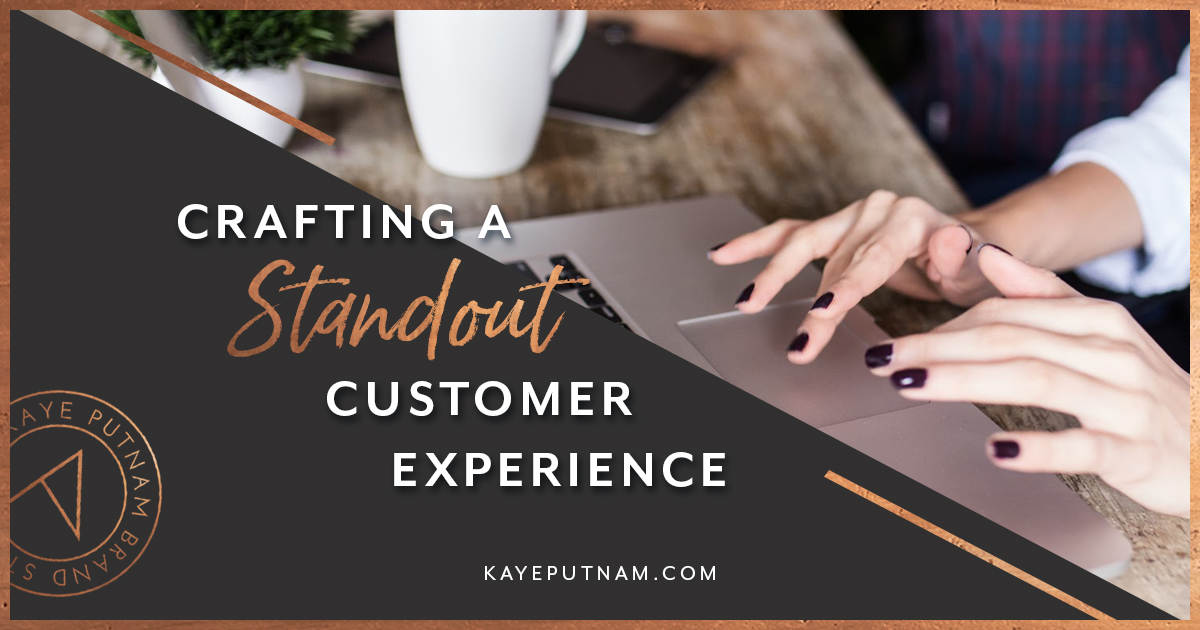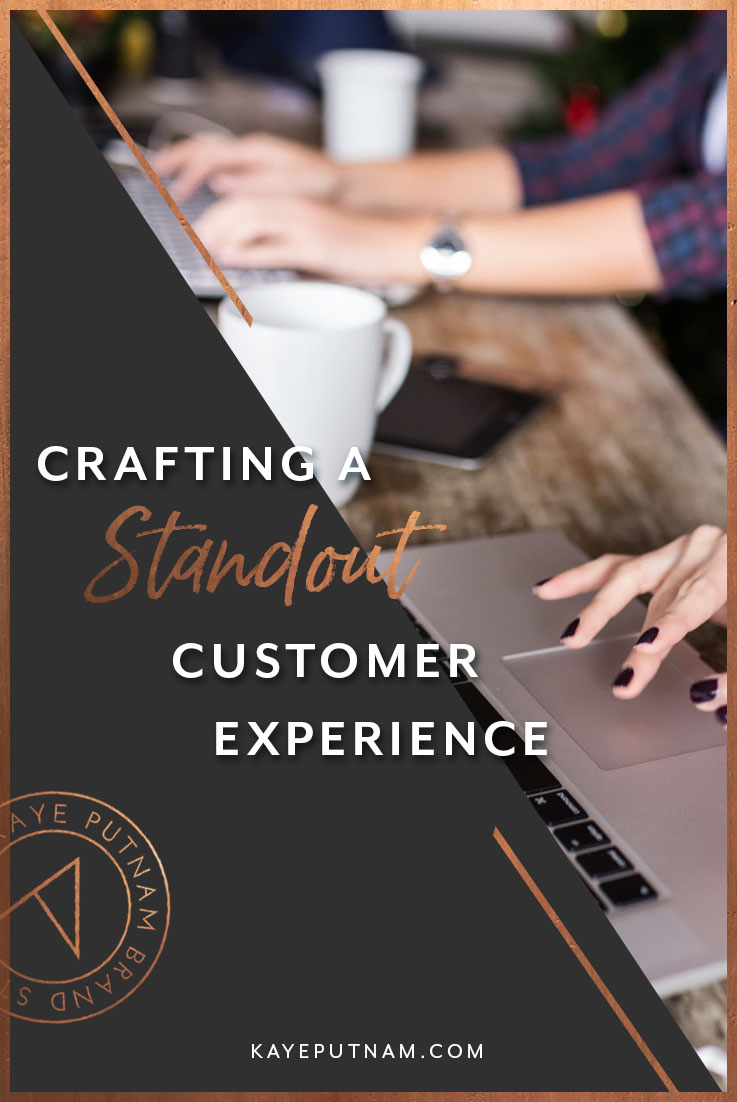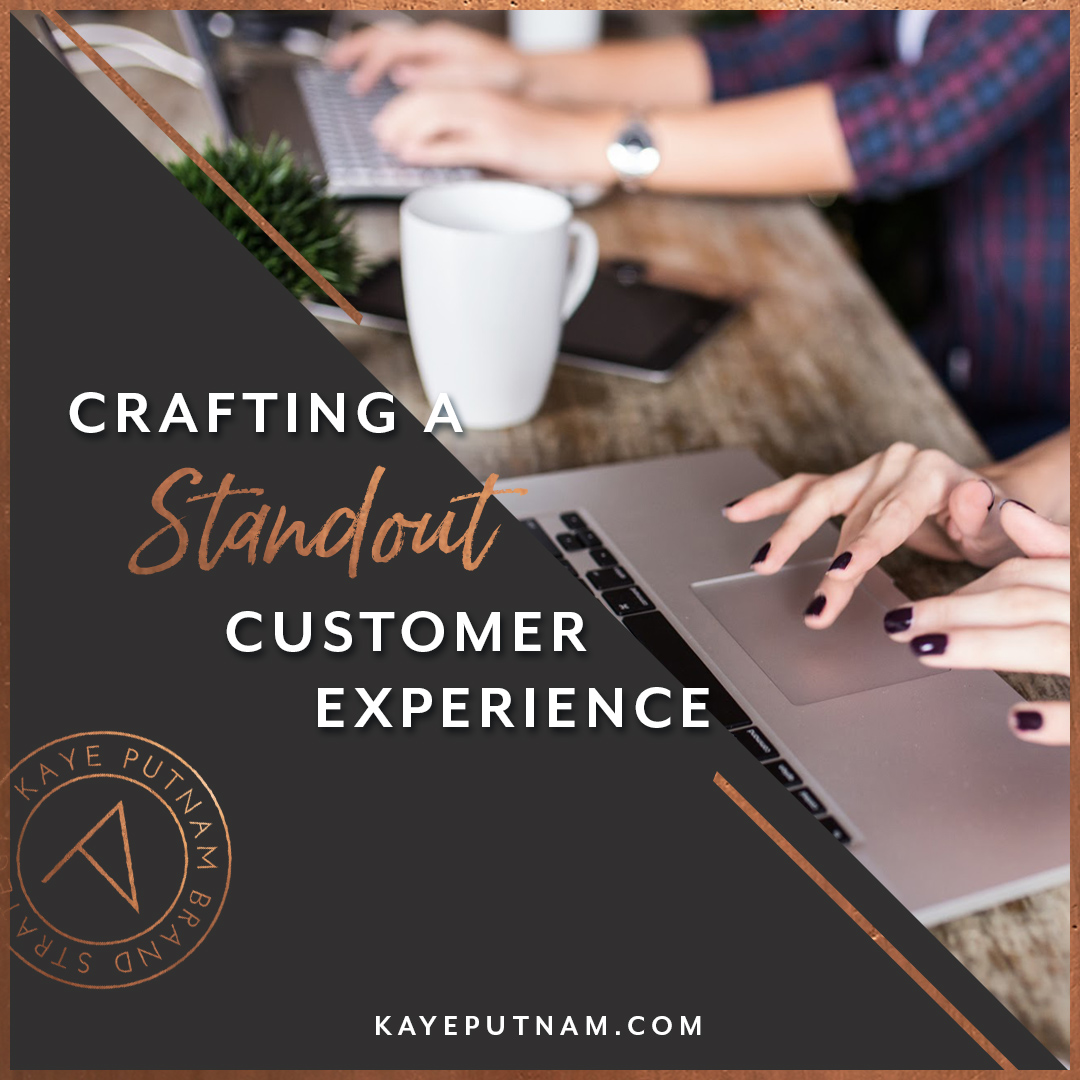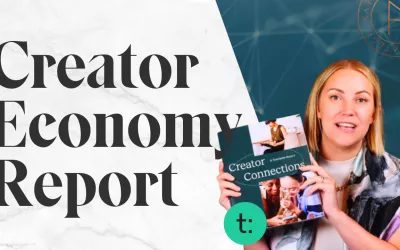SPOILER ALERT: Not having a customer experience strategy still results in an experience – just not one you’re likely to be proud of.
Like your brand, your customer experience exists in your buyers’ minds. Their perception of whether or not your process is enjoyable, fluid, and easy-to-navigate shapes their opinion of your brand.
As every industry gets more saturated, price is becoming less and less important when people decide what and where to buy. Instead, customers are looking to invest in brands that offer a remarkable experience.
Designing and implementing a seamless experience takes time and attention, but it has the power to propel your business so that you’re working less and landing more sales!
It seems intimidating, I know. But don’t worry – improving your customer experience isn’t as complicated as you might think. If you’re willing to dedicate the time and resources to improve buyer happiness, you’ll see major benefits.

As your business grows, it’s essential that your client experience is always improving. You can do this in two ways (and for a blockbuster business, do both).
1. Make the process of working together easy, positive, and exciting.
2. Improve the results that you can offer clients or customers.
But even before that, review your brand touchpoints.
A customer’s experience starts before they even *become* a customer. You only get one chance to make a killer first impression, so it’s crucial to take a step back and carefully examine your online presence.
- Do all of the links on your website work?
- Do you address common problems and questions before first contact?
- Do you provide value to someone BEFORE they become a paying client?
- Is your content free of typos and mistakes? (Site, emails, free resources, social, etc.)
- Is it clear how you can help, and what the next step should be?
It may seem simple, but that’s exactly why so many of these issues can be overlooked. And it’s a red flag for customers when they see the wrong “your” used on a sales page. Mistakes happen, but potential clients *will* notice. It makes an impression in their mind. Take the time to ensure the only impressions they get from you are clean, clear, and valuable.
Okay, now Part One: Customer Brand Experience
In the beginning… it’s easy to focus your attention on impressing your site visitors. But the truth is, it’s only the start to crafting an amazing experience. When you win over a lead, they become a customer – and that comes with its own set of expectations.
Your client or customer invested in you. They’ve taken a leap of faith in you.
Consider each element of the onboarding process and assess whether or not it’s valuable to your brand. The keys here are to remove as much anxiety as possible, validate their decision to work with you, and set the tone for the rest of the work you’ll do together.
Ask yourself:
- Is your business legally airtight?
- Terms and Conditions, Privacy Policy, Contract, and/or NDA
- Is your invoicing and payment collection process covering all the bases?
- Itemized invoices, quick and effortless payment options, emailed receipts, etc.
- Do you offer a PDF or guide for answering common questions?
- What do your buyers frequently need to know, and how can you make it more convenient for them to find answers?
- Is it simple to book an appointment with you?
- Are you using an online scheduling tool or relying on back and forth emails?
- How do you collect information from your clients or customers?
- And is it easy and fun for them?
Real talk: immediate buyer’s regret is alive and well.
It’s up to you to quell that fear. The sooner you can get them invested in the process, the better! Get them excited about their results and maybe a little in love with you… I mean your brand. 😉
Here are a few of my favorite ways to set the tone:
- I like to gift a small Starbucks gift card so my clients can treat themselves while they are working through their discovery questions. It shows that I’m grateful for them, and that I want to offer a positive experience before we even start working together.
- Give your new client something to do! They’re excited to start – why stop ‘em? Invite them to program materials, to join your online community, or to tell you about their business. This helps reduce their anxiety while taking advantage of their new project excitement! Plus, they’re much more likely to remember a great experience when they’re actively involved.
So they’ve gotten started.
Now what?
Well, while the beginning and end of a project are key times that your clients are more likely to remember – the middle is where the magic happens. ✨
This is the part of the relationship where the client is actively using your product or collaborating on a project. It’s also where you follow through on your promises. This is when your clients develop their first-hand opinion of how you treat clients, handle issues, and operate your business.
- How do you handle customer problems or questions?
- How’s your response time?
- Do customers know if they should call or email?
- Do you allow refunds or exchanges?
- Are your policies clearly understood?
- Are you easy to get in touch with?
- How do your clients know if a project is progressing as it should be?
- Do you really follow your timelines?
- Do clients go days or weeks without hearing from you?
As a service-based provider, this is also where your systems become one of your most essential tools. How user-friendly are all of the tools you use?
Use our suite of tools as an example:
- Calendly: For setting up calls throughout a client project.
- Asana: Giving clients immediate access to project progression and deadlines.
- Unlimited Email Support: For quick response times, a project manager is assigned to ensure that questions are answered quickly.
- Teachable: For project-specific training in a user-friendly format. (And to provide access to additional courses for increased impact on our client brand development.)
- Rev.com and Temi.com Transcribing: For finding brand clarity in everyday conversation. Sometimes it’s just easier to talk things out, so we extract those messages by recording them and digging through the transcripts later!
TL;DR? Don’t forget the middle! It matters.
*And hey, this is important for ALL businesses – both product and service-based.
And the closer – when a project ends…
Especially in a service-based brand, the end of a project can be awkward. If you don’t have a defined process for wrapping up a project, your client may think they’re still working with you weeks after a project should have ended.
A client needs to *feel* like the project is over and that they’re set up for continued success. They need to feel like they don’t need you anymore. You have given them so much knowledge and value that they’re ready to strike out on their own. Here are some tips for making this transition easy and smooth:
- Clearly define what/when the end of your relationship is.
- End on a high note! (I like to send a larger gift right at the end.) 😉
- Set expectations for how you’ll be communicating with them moving forward and planning any future work together.
- Have a follow-up plan! (I like one week, one month, and then quarterly.)
Your follow-up plan NEEDS to include asking for feedback of your clients’ impressions and experiences of your work together.
This is your gauge for customer experience and brand value. It’s how you make improvements. It’s possible that their FAVORITE part about a project was something you threw in as an afterthought. It could be something you’ve never thought of mentioning in the sales process.
Pin to read later!

^^^ Pin to read later! ^^^
And Part Two: Brand Results
The best way to achieve an amazing customer experience is to ensure that they have SUPERB results from working with you. Sure, follow up fast, be friendly, and have the most user-friendly interface of any of your competitors. But NONE of that matters if you’re not getting your clients the results you’ve promised.
Let’s talk about how to get those amazing results.
Decide what your KPI’s are for client success from the beginning.
- How can you track them as simply as possible?
- Can your clients give you direct access to data?
Cut out any extra “nice to have” elements from your process if they aren’t actually producing results. If you must, keep them in as a bonus.
We’ve automated feedback requests for clients, but it’s even better if you can see their results directly.
Record the questions you get in emails, communities, and client calls.
- Could you have avoided those questions?
- Is there somewhere in the sales process you can be more clear?
- Is there an additional training opportunity you should create? (Incorporate all relevant feedback into upgraded versions of your program or service.)
The answers to all of these questions can be helpful as a searchable FAQ, or you can use it to upgrade the program material/process as you go. Version 2.0 and 3.0 of your course/service/product have the potential to be so much more impactful if you are thoughtful about improving over time.
Here’s a great example of upgraded output for clients: our brand books!
Feedback taught us that our brand books were a great tool and helped clients see and feel their brands come to life. The trouble was, many weren’t using it to its full capacity.
- It should be used to empower your team.
- It should be sent to contractors for quick onboarding.
- It should stand as a living, breathing representation of your brand – not just the identity that was created for you a couple years ago without any updates.
So in response, we’ve upgraded to the SourceBook:
- Switched from PDF to editable webpage.
- Added additional documents for contractors to understand SOPs.
- We give training on how to keep the SourceBook up-to-date over time.
- More detail than ever on brand values, messaging, copy, and word choice.
Do a “brand promise” audit.
Above all, you need to live up to the promises you’re making.
- Make it a point to document all of the promises you’re making in your marketing and sales messages.
- Brainstorm weaknesses or risks in your process that could prevent you from delivering on each promise.
- Figure out ways you can reduce the risk of that happening!
- The agriturismo story we shared in an earlier blog is a good example of this.
In Conclusion…
If you have one takeaway from this article, it should be that whether you actively cultivate it or not, you have a customer experience.
Your audience, potential clients, and current clients all take notice of this experience. Their perceptions, impressions, and feedback all reflect how your brand has treated them throughout their journey as a client. And it’s not JUST when they’re paying you. You may have a client who just purchased last week but has been following you for years. Do you know what impressions they’ve already developed?
When you carefully craft your brand’s customer experience, you’re on the right track. You’ll have the peace of mind *knowing* that your audience loves your brand every step of the way. From pre-contact, post-signing, mid-project, to project wrap-up. You know this because you’ve created standards for every step.
It’s hard work, and it’s never really “done”. But it’s worth it. Your clients will appreciate it. They’ll tell their friends about it. And your hard work will pay off in countless satisfied clients happy to give you raving referrals!




